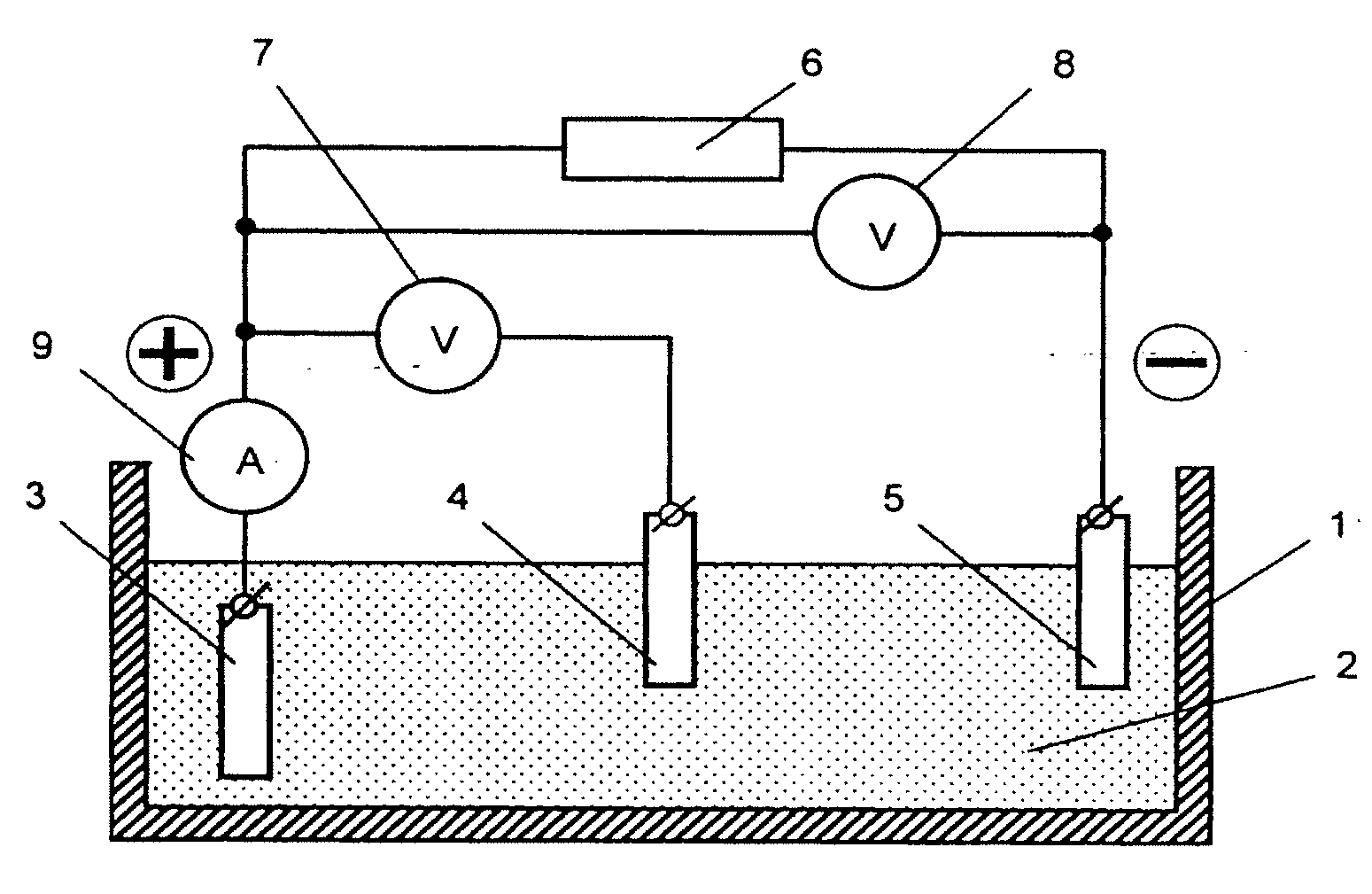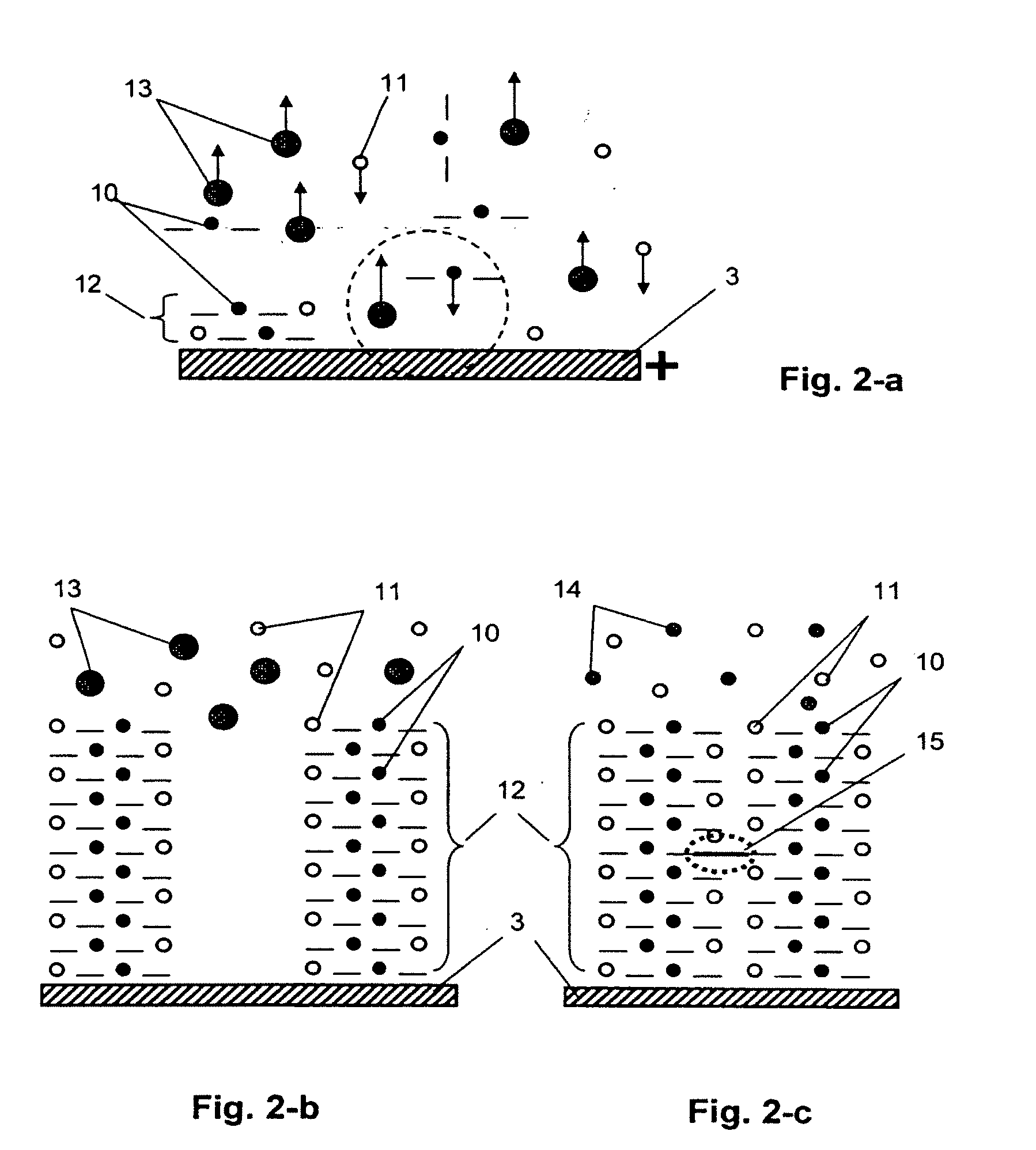Method of Manufacture of an Energy Storage Device
a manufacturing method and energy storage technology, applied in the field of electrochemistry, can solve the problem of reducing the probability of stack cross-linking, and achieve the effect of improving the quality of the manufactured electrod
- Summary
- Abstract
- Description
- Claims
- Application Information
AI Technical Summary
Benefits of technology
Problems solved by technology
Method used
Image
Examples
Embodiment Construction
[0023]A schematic diagram of an apparatus for depositing the redox polymer layer onto a substrate of an electrode in accordance with the inventive method is shown in FIG. 1. The apparatus comprises the following components. Reservoir 1 is filled with electrolyte 2, into which conducting substrate 3, comparison electrode 4 (e.g. a chlorine-silver electrode), and counter electrode 5 are submerged. Substrate 3 is electrically connected to the positive pole of voltage source 6, while counter electrode 5 is connected to the negative pole of voltage source 6. Control instruments for measuring and monitoring the voltage between substrate 3 and counter electrode 5 (voltmeter 7), voltage between substrate 3 and comparison electrode 4 (voltmeter 8) and the intensity of current flowing in the circuit of substrate 3 (ampere meter 9) are connected according to the scheme shown in FIG. 1.
[0024]Electrolyte 2 can be prepared based on organic solvents of the acetonitrile, dimethyl ketone, or propyle...
PUM
| Property | Measurement | Unit |
|---|---|---|
| diameter | aaaaa | aaaaa |
| diameter | aaaaa | aaaaa |
| diameter | aaaaa | aaaaa |
Abstract
Description
Claims
Application Information
 Login to View More
Login to View More - R&D
- Intellectual Property
- Life Sciences
- Materials
- Tech Scout
- Unparalleled Data Quality
- Higher Quality Content
- 60% Fewer Hallucinations
Browse by: Latest US Patents, China's latest patents, Technical Efficacy Thesaurus, Application Domain, Technology Topic, Popular Technical Reports.
© 2025 PatSnap. All rights reserved.Legal|Privacy policy|Modern Slavery Act Transparency Statement|Sitemap|About US| Contact US: help@patsnap.com



